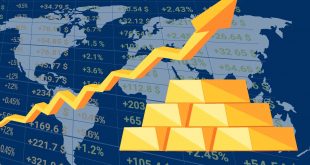In an interview conducted by Alarabiya Television, Mohamed Hashad, Head of Research and Development at Noor Capital and a member of the American Association of Technical Analysts, commented and analyzed the performance of financial markets.
Interviewer: Welcome Mohamed Rashad, Head of Market Strategy at Noor Capital, joining us live from Dubai. Let’s begin with the anticipated decision from the Federal Reserve. While the interest rate decision seems almost certain, what do you think we’ll hear from Powell’s statements and the economic projections he’ll share? What else do you expect him to say?
Mohamed Hashad: The markets are closely watching the Federal Reserve’s meeting minutes, eagerly awaiting indications about the future direction of interest rates and monetary policy. The key issue today isn’t about keeping rates stable or reducing them, but rather whether U.S. policymakers are truly committed to lowering rates. We’ll likely get clues on this from the meeting minutes. What’s also important today is Jerome Powell’s press conference, especially with the ongoing pressure from Donald Trump, who consistently calls for lower rates to reduce borrowing costs and stimulate economic growth.
Recently, a lot of data has supported the possibility of a rate cut, but personally, I don’t think we’ll see a rate cut until the September meeting. Inflation has started to decline somewhat, but on the other hand, strong signals are coming from the labor market. The U.S. economy added 139,000 jobs, personal consumption spending is at 2.5%, and the unemployment rate is at 4.2%. So, I expect the Fed to continue tightening policy.
Scenario One: If the Fed keeps rates steady and hints at being satisfied with inflation levels and the slowing labor market, I believe this will put downward pressure on the U.S. dollar. Conversely, if the Fed takes a cautious approach and closely monitors economic data before making any moves, it will support the dollar’s position.
Interviewer: The dollar has been showing some weakness recently. It hasn’t been playing the role of a safe haven as it used to. In fact, the yen and Swiss franc have taken the lead, and even U.S. Treasury bonds lost that role for a period earlier this year. Do you think U.S. assets have lost their role as a safe haven, or will we see a stronger return to them?
Mohamed Hashad: That’s right. In the coming period, I believe we’ll see a return to relative calm in the geopolitical tensions in the Middle East, which might influence U.S. assets. Additionally, the ongoing trade tensions between the world’s two largest economies, the U.S. and China, are factors that pressure U.S. assets. However, I believe this is a temporary phase. If market conditions stabilize, the U.S. dollar will regain its status as a safe haven. Under Trump’s policies, there’s always a push to encourage investment in U.S. assets, and regarding Treasury yields, several factors are likely to push long- and medium-term yields higher.
Interviewer: This week, we also have some important central bank meetings in Europe, especially the Bank of England, following the recent inflation data of 3.4%. Do you think they will keep interest rates unchanged as the markets expect? What might we hear about the Bank of England’s future policy?
Mohamed Hashad: This has been clearly reflected in the movements of the British pound. Yesterday, it hit a two-week low against the U.S. dollar. However, following the inflation data today, it tried to recover some of those losses. With inflation at 3.4%, I believe that inflation in the UK has started to show resistance to monetary tightening. This will likely add momentum to the upward trend. I expect the Bank of England to keep rates unchanged at 4.25% until it reaches its inflation target of 2%.
Interviewer: Looking ahead, do you think the recent shift from U.S. markets to European markets will continue? We’ve seen this shift in recent months. Do you believe it will persist?
Mohamed Hashad: Yes, I believe this trend will continue in the current market environment, especially until geopolitical tensions ease and confidence in U.S. assets is restored. The ongoing shifts in U.S. tax policies, especially those pushed by Donald Trump, will add a significant burden on the U.S. economy. However, once these tensions subside, I expect the shift towards European markets to ease, and we’ll see renewed interest in U.S. assets.
 Noor Trends News, Technical Analysis, Educational Tools and Recommendations
Noor Trends News, Technical Analysis, Educational Tools and Recommendations




